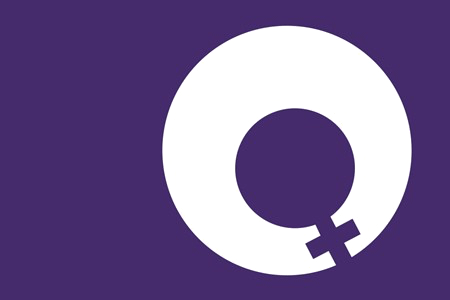 I know I just posted yesterday, but I have had a working draft of this piece in the hopper for a while; it just never quite grew its feet, as I like to say. And I can’t put a piece on the blog until it has its own feet. But today, being Women’s Day and all, the piece found its feet.
I know I just posted yesterday, but I have had a working draft of this piece in the hopper for a while; it just never quite grew its feet, as I like to say. And I can’t put a piece on the blog until it has its own feet. But today, being Women’s Day and all, the piece found its feet.
I recalled Isis Anchalee – remember her? She’s the bright, talented, strong, and yes, beautiful platform engineer from the Tech Startup OneLogin who asked her to participate in their ad campaign, which then sparked the #ilooklikeanengineer hashtag movement. It didn’t take long for the misogynists among us to determine that Isis was simply too pretty to be a “real” platform engineer. There’s just no way a smart brain could be housed in that attractive body.
The movement caught on fast, but it has faded just as quickly. It’s not enough to repeatedly have lists like Forbes top 30 women under 30, although that’s a great list. I say it’s not enough, because when a company like Microsoft reveals its diversity numbers to reflect the staggeringly awful truth: over 75% male and 60% white, with an only 29% female workforce globally, that’s alarming. And then comes the real hit: only 12.5% of Microsoft’s senior leadership in America is female. (Source: Forbes). This is happening even though we know that women are generally better at coding tasks than men.
But we also have to reveal the truth that, according to the US Department of Labor, only 12% of Computer Science graduates today are women.
Why? What about this environment is blocking women? Are we really just not cut out for this field?

Not really. According to Gayle Laakman McDowell, author of Cracking the Interview, and a coder herself, it’s primarily that girls, when they are girls, are mostly sent the message that, “hey, this stuff is not for you.” Subtly or overtly, young women are, from a very young age, steered toward the humanities while young men are steered toward hard sciences. (We’ve known this for a long time, but I’m providing ethos here. I’m a writer, so to show you I have backup, I provide a subject-matter-expert, okay?)
So we tell girls and young women that they just don’t look like coders. They look like teachers, they look like nurses, they look like bank tellers or whatever, but they do not look like they fit in the cubicle-hive style pressure system that is software development or platform engineering. Is that it?
In other areas of their lives, we are telling them to be “totally natural,” or to be proud of what they look like. We tell them to embrace their body types and to live their lives with gusto. Kate Winslett recently signed a modeling deal with L’Oreal that has a “no Photoshop” clause, and we applaud this honesty and truth to herself.
But we haven’t told young girls that if their true beauty is in writing code, that they are totally entitled to that gorgeousness?
The percentage of women who work in tech companies remains consistent, at around 30%. So there ARE women who do this stuff, but it’s stagnant. It is failing to grow. Even though more women go to college, and an even greater number of women attain graduate degrees, the percentage stays flat. Now, what I find truly remarkable is that the percentage of women in technical or leadership roles – roles where they can actually influence the direction the company takes, is even lower. This difficulty may be the result of well-known sexism in the technology sector, or at least an unwillingness to combat it. The New York Times ran a great piece in April of 2014 called “Technology’s Man Problem,” documenting just this trend, and not much has changed in the last two years, but some things have.
It is not just a matter of moving more girls into a pipeline of studying STEM, because the high rate of attrition in tech moves them right on out the door just as quickly. Teaching women and girls that the tech field is appealing, lucrative, and open to them is not the quick fix we hoped it would be. Instead, fixing the culture that says, “you don’t look like an engineer, coder, tech writer…” THAT is the solution, or at least part of it. In the UK, a campaign called “This Girl Can” strives to connect young women through physical activity and inspiration, while here in the US, Target recently launched an ad campaign called Target Loves Every Body.
I believe we need a culture shift that defines, or redefines, the landscape to show that coders look like lots of things, and writers look like lots of things. Women in many careers have been trying to reshape their images from Hollywood to magazine covers, so why not in Silicon Valley, too?
Women helping women is the key to confidence and the key to success. If tech culture is going to change, everyone needs to change. The emotional and professional cost is simply too high not to. So on this, Women’s Day, the challenge is to reach out to a woman in your field – or a woman not yet in your field – and mentor or inspire, encourage or reassure her. That is how it gets done. Make a pledge to yourself that you will make room in tech for one more young woman, or that you will make additional room for one more established woman. It’s a jungle in here. Even women who have worked in here for years can get lost in the tangle of tasks, so have lunch this week, next, and next month too. There is networking to be done, and we could all use it. Today does not need to be the only Woman’s Day you have this year. Let the women in your life, especially in your tech life, know that they LOOK like accomplishers, achievers, builders, and leaders.
And then, if you are a woman, make sure you accomplish, achieve, build, and lead.



Nice post – I can relate. Always worried about coming off as “too pushy.” And actually I’ve been told I’m too pushy quite often.
Oh well! The best thing we can do is continue to achieve.
LikeLiked by 1 person
Dori, did you know that a recent study showed that if women speak up more than 25% of the time in a group discussion, they are seen to be “dominating” that talk?
We have to change this standard by continuing to talk, contributing to the conversation, and offering our insights. They have value.
LikeLiked by 1 person
Wow interesting. But that doesn’t surprise me at all. You are totally right.
LikeLiked by 1 person